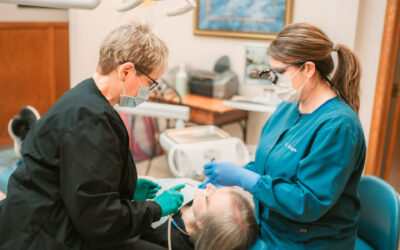Maintaining excellent oral hygiene is crucial for a healthy and confident smile. Two of the most fundamental and effective practices for achieving optimal dental health are brushing your teeth and flossing. These daily habits help remove plaque, prevent cavities, and promote gum health. In this article, we’ll delve into the importance of brushing and flossing, highlighting the recommendations of the American Dental Association (ADA) – a trusted authority on dental care. By understanding the proper techniques and frequency, as well as the benefits of incorporating these practices into your routine, you can take significant strides toward a bright and healthy smile.
The Importance of Brushing Your Teeth
Brushing your teeth is the foundation of maintaining good oral health. It helps remove plaque, a sticky film of bacteria that forms on teeth and gums, preventing it from causing tooth decay and gum disease. The ADA recommends brushing your teeth at least twice a day with a soft-bristled toothbrush and fluoride toothpaste.
Proper brushing technique:
To ensure effective cleaning, the ADA advises the following steps:
- Hold your toothbrush at a 45-degree angle against the gumline.
- Gently move the brush back and forth in short, tooth-wide strokes.
- Brush the outer, inner, and chewing surfaces of all teeth.
- Clean the inside surfaces of the front teeth using a gentle up-and-down motion.
- Brush your tongue to remove bacteria and freshen your breath.
Remember to replace your toothbrush every three to four months or sooner if the bristles become frayed. Additionally, individuals with certain conditions or physical limitations should consult their dentist for alternative brushing techniques or aids.
Benefits of brushing:
Consistent brushing offers several benefits, including:
- Plaque removal: Regular brushing helps remove plaque, which, if left unaddressed, can lead to dental problems such as cavities and gum disease.
- Fresher breath: Brushing eliminates food particles and bacteria that contribute to bad breath.
- A brighter smile: By removing surface stains, brushing can help maintain a brighter, more attractive smile.
- Gum health: Proper brushing techniques stimulate the gums, promoting healthy blood flow and reducing the risk of gum disease.
The Vital Role of Flossing
While brushing cleans the surfaces of your teeth, it’s equally important to clean between your teeth and along the gumline with dental floss. Flossing removes plaque and debris from areas that a toothbrush cannot reach effectively. The ADA recommends flossing once a day to maintain optimal oral health.
Proper flossing technique:
Follow these steps for effective flossing:
- Start with an 18-inch strand of floss and wind most of it around one finger.
- Hold the remaining floss tightly between your thumbs and index fingers.
- Gently guide the floss between your teeth using a back-and-forth motion.
- Curve the floss into a C shape around each tooth and slide it below the gumline.
- Move the floss up and down against the tooth surface to remove plaque and debris.
- Use a clean section of floss for each tooth.
If traditional flossing is challenging, consider alternative options like interdental brushes, floss picks, or water flossers. It’s crucial to find a method that works best for you and allows you to clean between your teeth effectively.
Benefits of flossing:
Incorporating flossing into your daily routine offers several advantages, including:
- Plaque and tartar removal: Flossing reaches areas that brushing cannot, helping to remove plaque and prevent tartar buildup.
- Gum health: Flossing helps remove plaque from the gum line, reducing the risk of gum disease.
- Cavity prevention: Removing plaque between teeth prevents cavities from forming in those hard-to-reach spaces.
- Fresh breath: Eliminating plaque and food debris helps combat bad breath, leaving you with fresher breath.
Maintaining excellent oral hygiene is essential for overall health and well-being. Brushing your teeth and flossing are two fundamental practices that the ADA strongly recommends for optimal dental health. These habits, when performed correctly and consistently, help remove plaque, prevent cavities, and promote gum health. By following the ADA’s guidelines for brushing and flossing techniques and making them a part of your daily routine, you can pave the way for a healthier smile. Remember, regular dental check-ups, professional cleanings, and seeking advice from your dentist are also vital for maintaining long-term oral health. Embrace the power duo of brushing and flossing, and take control of your dental well-being for a lifetime of beautiful smiles.



